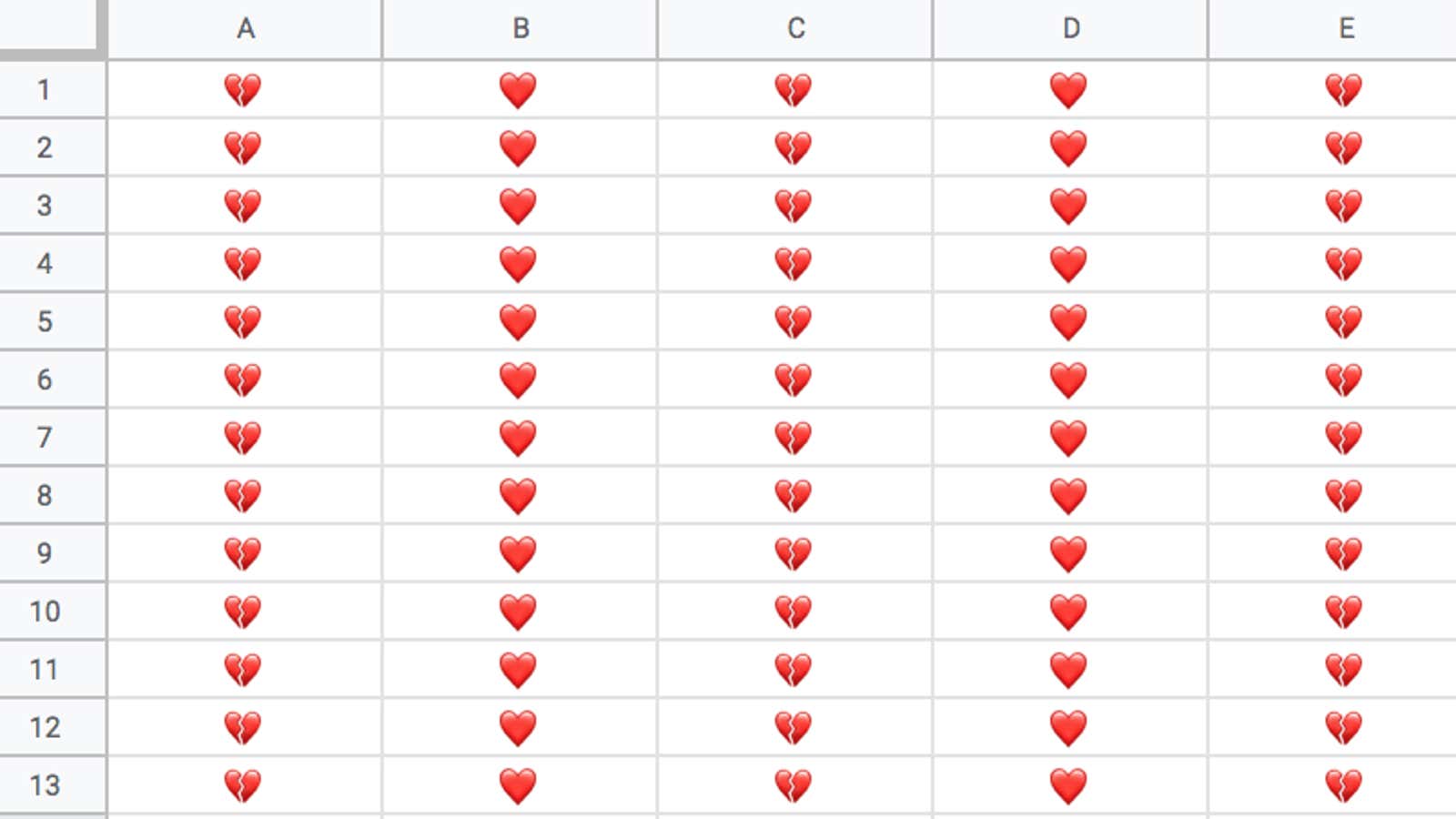It was the love of my life, but now it’s over between us. I am breaking up with Microsoft Excel. After a long period of soul-searching, my feelings for Google Sheets grew from flirtation to true love.
I first met Excel in high-school computer class. As a lover of math and data, it was clear we had a future together. Obsessed with sports at the time, I used Excel spreadsheets to start my first fantasy football league, and do all sorts of fancy calculations with baseball statistics. I was amazed all of the complicated formulas I had access to, and the ability to filter data in any way I liked.
In college and just after, my relationship with Excel deepened. It would help me get my first jobs doing economic research, which involved large amounts of data entry and manipulation. With Excel by my side, I learned how to summarize data using pivot tables, use the “VLOOKUP” function to merge datasets, and make beautiful charts. I did have some minor dalliances with other statistical software programs at the time, like Stata, but Excel always let me be me.
When Google Sheets first appeared in 2006, I barely noticed. I was happy with Excel, and Sheets just felt like a lightweight knockoff. My only real memory of it at the time was the shock I felt at how brazenly Sheets imitated Excel’s style.
Over the years, though, my attraction to Sheets grew. It started with the ability to easily share Sheets with friends (a bit of polyamory, to extend the analogy). We could all work together on the same spreadsheet at the same time, rather than having to send files back and forth in Excel, leading to 17 different versions of the same spreadsheet. (Collaborative editing of Excel spreadsheets online is now possible. It’s still pretty clunky, but Microsoft is making an effort to improve it.)
Still, my use of Sheets was limited to a few basic tasks. You couldn’t hide rows and columns until 2007 or use the program offline until 2013. Eventually, Sheets caught up. Today, it is possible to do basic tasks in Sheets just as easily as in Excel. The number of functions each offers is nearly equal (Excel has 477 functions compared with Sheet’s 432).
Pivot to Google
One thing that maintained my passion for Excel was the power of pivot tables. Pivot tables allow you take a large amount of data and get summary statistics for various groupings. For example, given a spreadsheet with stats on the gender, city, and salary of different people, a pivot table allows you to make a table with the average salary for men and women in different cities. In 2011, Sheets finally introduced pivot tables. At first they were unwieldy, but after a 2018 update, I found it easier to make pivot tables in Sheets than Excel. The interface is simply more intuitive.
In early 2018, for the first time, I would sometimes find myself naturally using Sheets without even considering Excel. It felt strange, but right. I began recommending Sheets to colleagues.
🎧 For more intel on collaboration tools, listen to the Quartz Obsession podcast episode on Google docs. Or subscribe via: Apple Podcasts | Spotify | Google | Stitcher.
Around this time, Excel really blew it. Starting in late 2018, I ran into a serious bug. Every time I tried to sort columns of data alphabetically or from highest to lowest, Excel crashed. I am not the only person who encountered this bug—at least four other members of the Quartz newsroom reported having this issue. This was a real breakdown in our relationship. I lost important work when it crashed. The bug is fixed by updating your version of Excel, but this is a hassle, and something you never have to worry about with Sheets. Because Sheets lives in the cloud rather than on your local computer, bugs are immediately fixed for everyone who uses Sheets.
But maybe it was me who changed. In the years since I started my relationship with Excel, I began using the statistical programming language R for complicated calculations and making charts (it’s undeniably better than Excel for that kind of work). This left me needing spreadsheets for only the simplest tasks. That said, if you haven’t learned a coding language like R, Python or Julia, Excel is probably still a little better than Sheets for statistical, graphical, or financial analyses.
Whatever happened to me and Excel, I will always cherish the time we had together. But it’s time to move on.
